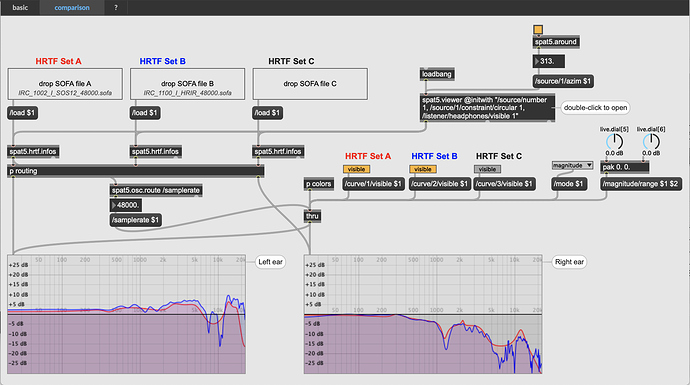

But alas, maybe you’re right, that N is not up to this kind of task. I really wish I could stay within Nuendo for this, since I just love being there. I’ll check the links you have recommended and see if I can find something there. The suggestion of improvising using “2x8” channels is something I have thought of, but again, it seems I would not have the total reverb effect in all channels at once.
#Ircam spat how to
Is there anyway to create this kind of universal reverb for IOSONO? My brain twists into a pretzel when I try to think about how to create that with non-multichannel reverb and panning tools. This is something SPAT is great for, but as you have pointed out, I am concerned about the 8-channel limitation. You can imagine when a sound moves to one side of the circle, the sound is still present – but in a more reverberant state – in the other speakers, gradually sounding more and more reflective in speakers further from the source’s location. except that it can not create room simulation (reverb), and I am really hoping for something like SPAT, where the reverb is created for the “room” which the 12 channels are feeding from, rather than just adding reverb to sounds which would cause a totally different effect. Thanks for the feedback! I read up on the IOSONO plugin, and it looks great!. Max/MSP allows for up to 512 channels of audio from what I recall, and you could build your own panner to pan over any array you like. You could also try the ICST Ambisonic tool-set for Max/MSP it works great, and the GUI is very nice. You will find a bunch of VST tools for large multi-channel arrays at the Acousmodules website.

Unless you are using Wavefield synthesis ISONO will not be much use here.įor large arrays Reaper is the best DAW, up to 64 channels on a single bus, followed by Podium which allows 32. I tried ISONO in Nuendo, the circular panning in 8 channels sounded off compared to the N5 panner, seemed the panning algorithm was not designed for 8 speakers spaced equidistantly in a circle. The FLUX IRCAM Tools VST version of SPAT is restricted to 8 channels, but if you use the original standalone version of SPAT for Max/MSP you may be able to use more channels (I don’t remember exactly how many). The N5 panner is not a “room simulator,” you can rotate/manipulate a multi-channel image in ways that are impossible with the old panner and it is certainly great to have such a tool as standard in N5 but we are still working under the limitations of Nuendo’s output bus architecture. The Nuendo 12 channel bus is configured for 10.2 Surround so circular panning is impossible even with the V5 panner.

You could improvise by using 2x8 channel busses, but then how are you going to pan with a single panner? Nuendo, no matter what version you use, is useless for what you describe (seamless circular panning over16 speakers).
#Ircam spat upgrade
Your reply will help greatly in my deciding whether or not to upgrade now, to better handle this 16 channel surround project. So it sounds like it is more than just a panner… is it also also a room simulator? Is the V5 Panner capable of similar panning effects as Spat? I just read on the N5 webpage that you can “rotate rooms and atmospheres” with the V5 Panner. What is the max bus count for a Group Channel Track in N5? Therefore, I was wondering two things about N5, and hope you might be able to give some advice: So when Spat in inserted, it can only show up to 12 virtual speakers. But I am currently on Nuendo 4, which has a maximum limitation of 12 busses for a Group Channel track. I was considering using IRCAM’s “Spat” plugin for the panning. The audio must be created so that it allows sounds to pan seamlessly throughout the 16 speaker “space”. I am creating a surround sound installation which will feature 16 speakers arranged in a large circle.


 0 kommentar(er)
0 kommentar(er)
